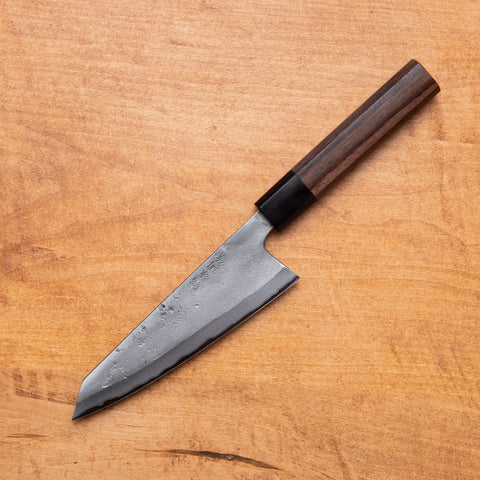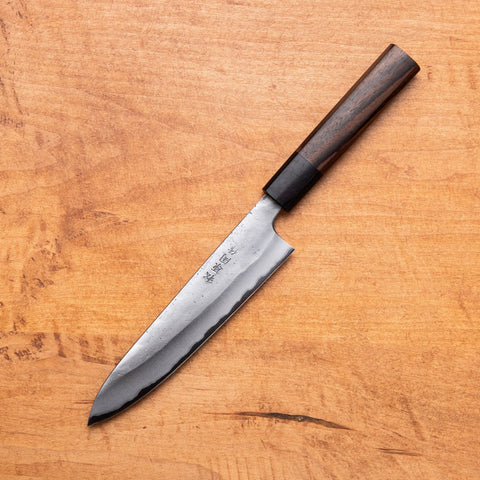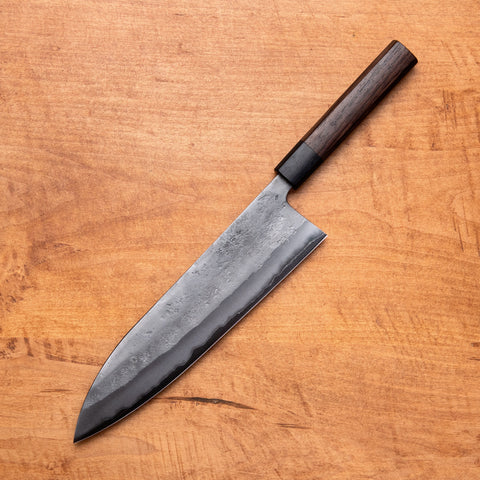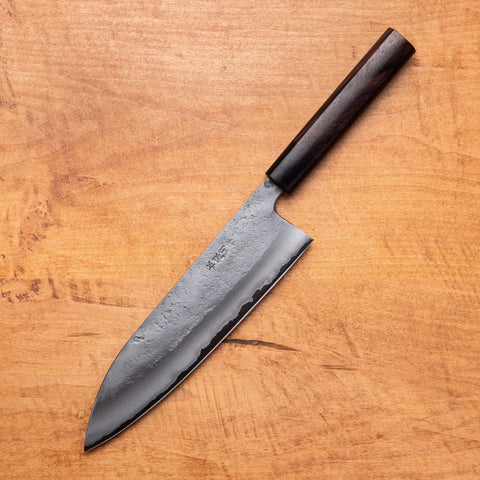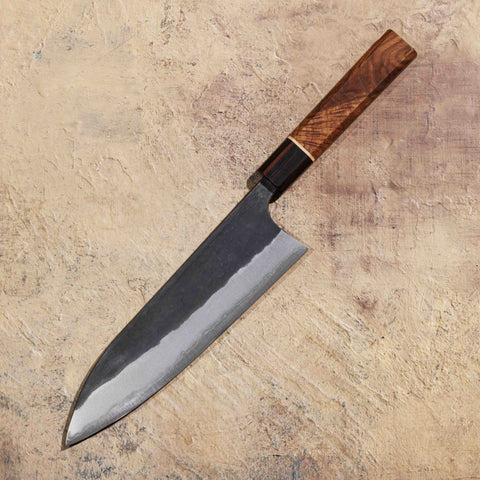Matsubara Knives (松原)
Matsubara knives are traditional Japanese kitchen knives handcrafted in Ōmura City, Nagasaki Prefecture. Hidden in the hills of Ōmura City, Nagasaki, Matsubara knives are forged not in factories, but in fire and tradition. For over 100 years, the Tanaka family has hammered purpose into steel — one blade at a time.
The History of Matsubara Forging (Since 1900s)
The roots run deeper than the forge. After the Taira clan fled the Battle of Dannoura in 1185, exiled swordsmiths settled in Matsubara village. By the 15th century, they were forging sickles and tools. Over time, that knowledge evolved — from battlefield to kitchen.
Today, Katsuto Tanaka, a fourth-generation blacksmith, still heat-treats and sharpens each knife by hand in his Ōmura workshop. His work reflects a lineage dating back to the post-Heian era, when swordsmiths became farmers and forged their legacy in kitchen steel.
Types of Matsubara Knives
- Gyuto: Tall-profile chef’s knife. Perfect balance and bite.
- Bunka: Compact and aggressive. A favorite for everyday prep.
- Kiri Cleaver: Tall and bold. Excellent for vegetables and meat.
All blades feature kurouchi, nashiji, or tsuchime finishes — organic, hand-hammered, and full of soul.
Why Chefs Respect Matsubara
- Forged, not fabricated: Every blade is shaped, laminated, heat-treated, and sharpened by Katsuto himself. No shortcuts. No compromises.
- Steel with heritage: Using traditional carbon steels, these knives take a razor edge and keep it.
- Tall, elegant geometry: With signature height and balance, Matsubara knives offer incredible control and cutting feel.
- A knife with roots: Each piece carries the story of a village, a family, and a fading art — made for hands that understand the weight of legacy.
“When I hold a Matsubara, I feel the fire that made it. It’s not just a knife — it’s a memory in motion.” — Chef Hiro Sakamoto, Nagasaki



